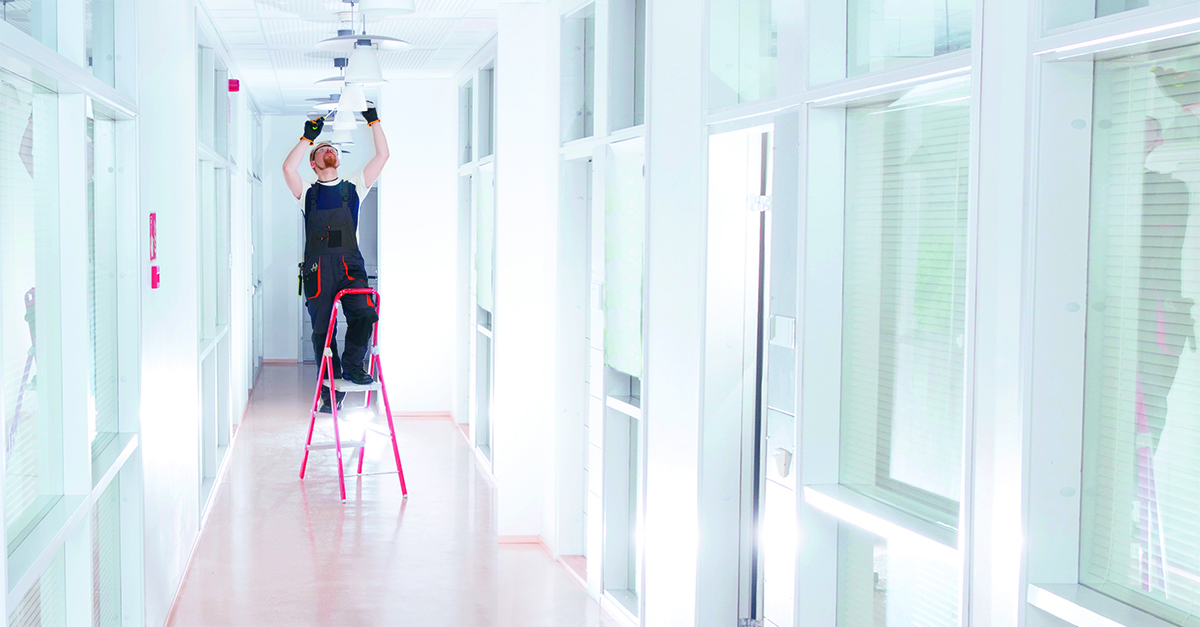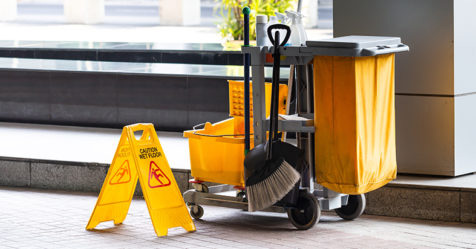If it’s not broken, don’t fix it, right? Well not necessarily. Like a car, facilities need to undergo regular maintenance and upgrades to ensure they’re always in peak working condition. Deferring maintenance and upgrades to another budget year or until they are absolutely necessary can result in higher operational costs in the long run. Not only that, deferred maintenance can leave you open to liability issues and also affect other building systems.
When formulating a budget plan and balancing the cost and benefit of projects, there is a temptation to make cuts in building maintenance and improvements. It can be seen as an easy way to defer expenses and save some cash that might cover shortfalls in other areas. The reality of this decision is quite the opposite: You’re taking a gamble that equipment or structural components of the facility won’t require repairs, or even worse, complete replacements.
You may win this bet for a while and become complacent, but eventually your luck will run out and you could end up having to pay for multiple major repairs or replacements that will decimate your budget for years to come.
The True Cost of Deferred Maintenance
When budgets are tight, everyone is asked to do more with less. It may seem like an easy fix to cut the maintenance staff and budget, or in an effort to save money in the short term, kick the can down the road and delay repairs. Unfortunately, in these situations, a major repair or catastrophic failure could easily result in unanticipated costs in a number of ways, from costly overtime to employee safety risks.
Deferred maintenance on buildings results in more than US$1 per square foot extra in utility bills, according to a U.S. Department of Energy analysis. That adds up quickly and can easily outpace the cost of the original repairs. Below are several examples of how deferring maintenance projects can trickle down to harm your budget across your operation:
Overall system decline
When building systems, such as heating, ventilation, and air conditioning (HVAC) systems, don’t receive regular maintenance, they become less energy efficient and put an increasing strain on the utilities budget. Often the effects of postponed maintenance spread and begin to affect other systems. In fact, a neglected repair in one system can cause a catastrophe in another system or area. For example, a faulty heating and cooling system does more than just make employees uncomfortable. A cooling failure can cause servers and computers to overheat and fail. Not only does that mean a work stoppage; it could result in a permanent loss of data. A roof leak can flood buildings, destroying infrastructure, technology, paper files, and valuable furniture and artwork.
Emergency repairs and renovation projects
Imagine the cost of having to tear your building down to the skeleton, rebuild it, and replace all the furnishings. This could result from a leaking roof that was not repaired in time to avoid flooding. Or perhaps an electrical repair was delayed, resulting in a fire that damaged the building beyond repair. Catastrophes like these are often so cost prohibitive that companies have difficulty recovering from them; the effects ripple throughout the company for years to come, if not destroying the company outright.
Employee health and retention
A building where the ventilation system has been neglected or a leak has been ignored can become a “sick building,” leading to an increase in employee sick days and medical costs. This will begin to impact the budget as costs of employee benefits increase while efficiency and retention decreases. Not only that, a sick building can have a profound effect on a company’s reputation and ability to attract top talent. No one wants to be known as the company that allowed poor ventilation or black mold to make thousands of employees ill.
Company reputation
Something that may not be thought about in relation to deferred maintenance, especially when a particular project has been deferred for years, is how it will impact a company’s reputation and ability to make a good first impression. Broken or outdated infrastructure and furnishings can immediately make the most modern of companies seem behind the times. Imagine having a potential client meeting after the client has a ride in a shuddering elevator.
A poor reputation and bad first impressions have an increasing impact on a company’s ability to do business over time. If you cannot attract clients, business, or talented employees, your budget will begin to shrink and it will become even more difficult to make a profit.
Fines, fines, fines
A very real risk of deferred maintenance is that it leaves you open to paying fines to regulatory agencies or settlements for lawsuits. Are the cost savings really worth the possibility of failing an inspection? How would you feel if someone was physically harmed as a result of a postponed repair? The settlement of a lawsuit, and the legal costs, are likely to be many times the cost of having made the repair or performed the maintenance in the first place.
Spend Now, Save Later
Planned maintenance and prioritizing operational investments will reverse the compounding costs of neglect. Planning for maintenance and upgrades ensures necessary repairs are addressed in a timely fashion, before they become a costly catastrophic failure. Equipment and facilities that are well maintained work more efficiently and are safer; they are less likely to incur additional costs.
When budgets include an adequate allotment for planned maintenance, it’s possible to set up an annual and long-term schedule that ensures all equipment will receive preventative maintenance or upgrades on a routine basis. With careful planning, this can actually increase return on investment and decrease costs over time.
This sounds logical, but how do you make it happen? Well first, you have to prioritize your maintenance projects. Start by making a list of the things that:
- Must be done
- Need to be done but can wait for next year
- Would be nice to do if the money was available.
Once you have this list in hand, estimate the cost of the repairs that should be scheduled for the year and then add funds to deal with emergencies. You may need to fine-tune it from year to year until you have a more accurate idea of the usual costs.
Plan for Resistance
So you’re in the budget meeting and resistance is rampant. Everyone thinks it would be best to cut the facilities budget, and you need to convince them that course would not be advisable. Hopefully you have done your research and planning, so you can convince your superiors and fellow managers the possible costs of deferring maintenance are just too great. With this preparation, you will be able to defend your budget lines and make a case for good facilities planning and securing the budget to ensure it. Here are some examples of what information to prepare when it’s time to please your case:
- Example 1: Highlight the high costs of deferring maintenance to save money. Make sure they understand the money you save now could end up costing the company so much more in the long run. Select one or more neglected projects, and paint a picture of the budgetary impact if the issues result in a catastrophic failure. Make sure to contrast the lower cost of maintenance with the higher cost of replacement if the equipment fails.
- Example 2: Point out the cost savings in energy and gas usage when equipment is performing at peak efficiency.
- Example 3: Employee morale and safety also impacts future budgets by increasing the productivity and innovation of the company overall, and the ability to attract clients and top talent for years to come. What it comes down to is return on investment and ensuring leadership understands the power of that return to ensure a healthy facility going forward.
Expect that you may be required to defend your maintenance plan each year until it becomes part of the normal operating procedure. Buy-in from leadership should increase as they see a savings in overall costs and how much more problem-free the facilities have become. It will become easier and easier to see that well-funded planned maintenance avoids the compounding cost (reportedly as much as 7 percent per year) of deferred maintenance.
Baby Steps, Big Results
Once your organization begins to realize the cost savings, you can begin to move up some of the items from your “nice-to-have list,” ensuring your facility is always state-of-the-art, modern, and running well. All your hard work and planning will continue to pay huge dividends going forward. Just keep an eye on the plan and make it happen.




